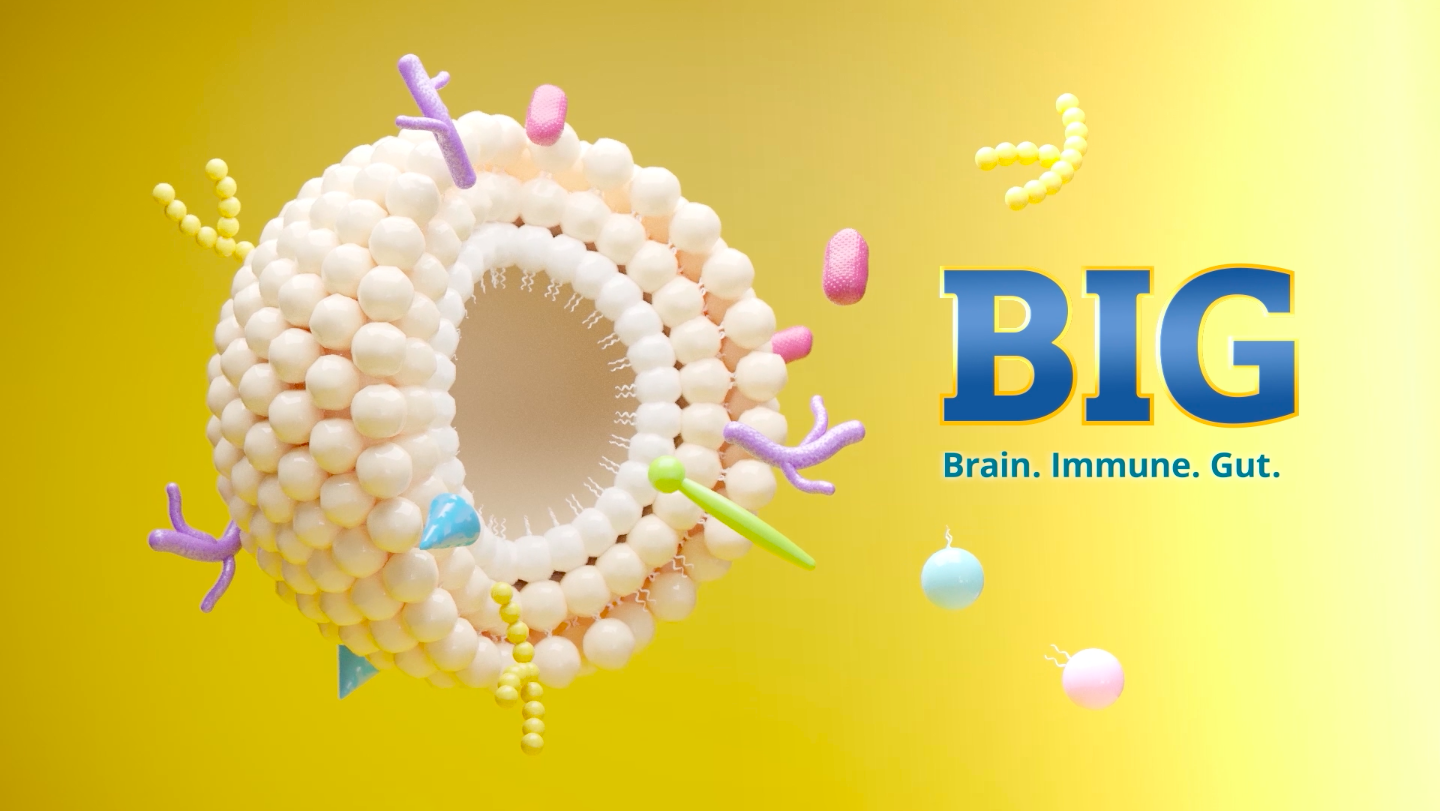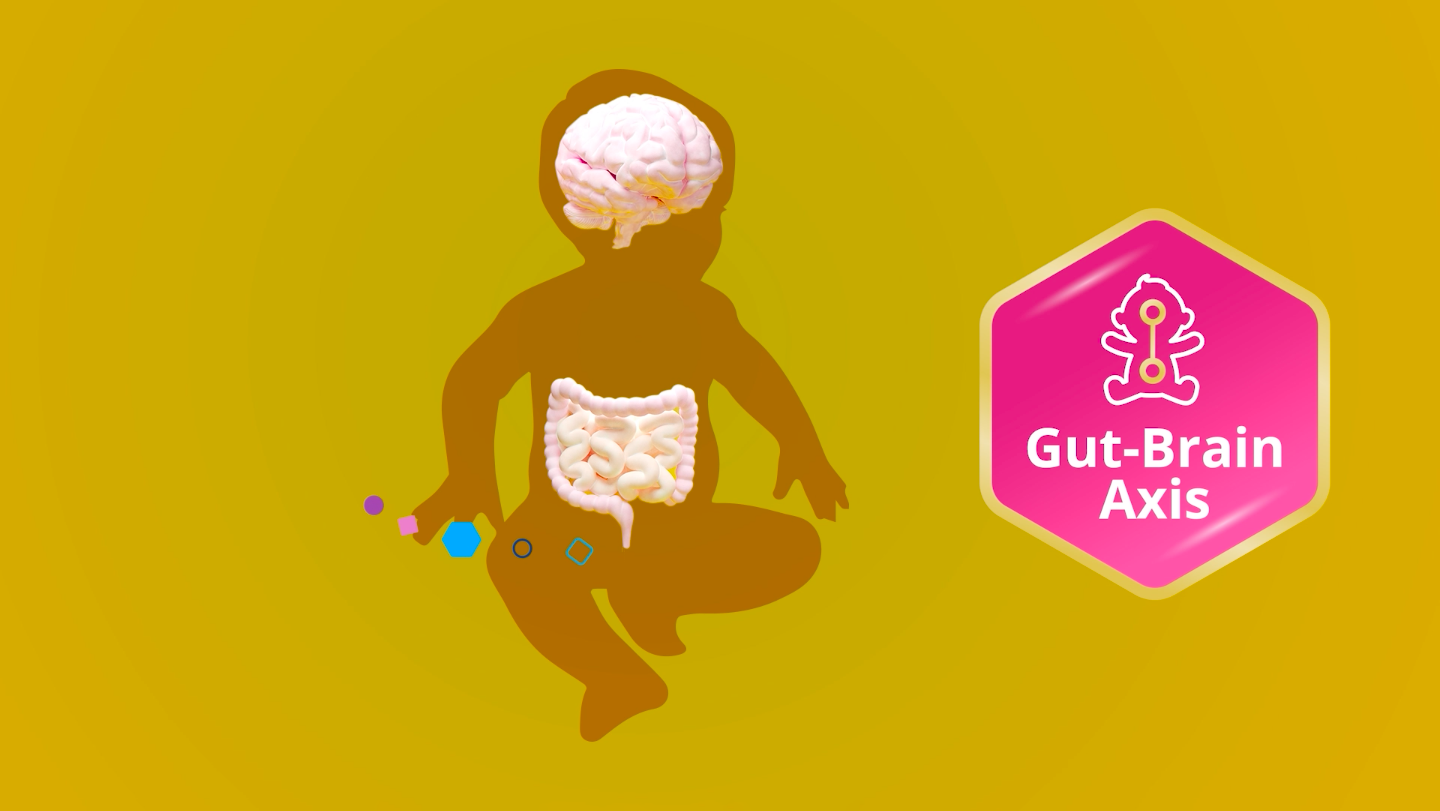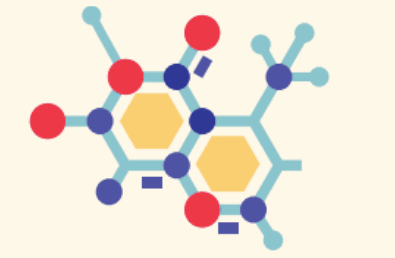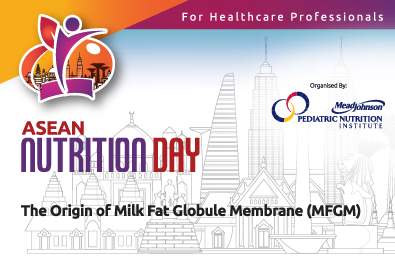Breastmilk provides the best source of nutrition for an infant, providing essential nutrients and antibodies to support the immune system. Breastfeeding plays a critical role in an infant’s growth and development and is widely recognized as the optimal way to feed an infant. The World Health Organisation (WHO) recommends exclusive breastfeeding during the first six months of age, and continued breastfeeding for up to two years of age and beyond. Safe, age appropriate and nutritious complementary foods should be introduced from six months of age.
MFGM AT A GLANCE
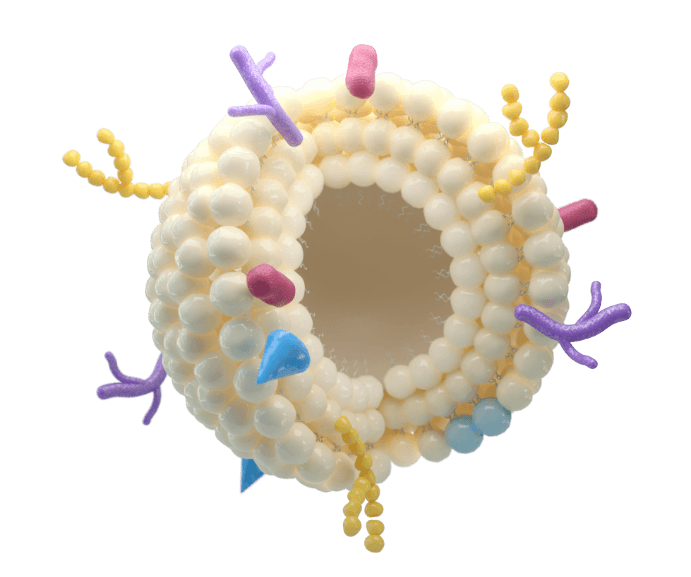
What’s New?
MFGM Updates at ESPGHAN 2022
What is MFGM?
Milk Fat Globule Membrane (MFGM) is a complex structure with functional benefits to the brain, immunity, gut, cardiovascular system and musculoskeletal system.1


In infants, MFGM has been clinically shown to support the development of the brain, immunity and gut, setting the foundation of brain and gut communication.2,3
In adults, MFGM has been clinically shown to support cognition, cardiovascular health, gut health and mobility.1
MFGM is a trilayer membrane, composed primarily of bioactive lipids and proteins. This trilayer membrane surrounds a fat core comprising triacylglycerols and fatty acids, forming a milk fat globule.3
MFGM is naturally occurring in mammalian milk including human breast milk and cow’s milk.4
Up until recently, milk formulas do not contain much MFGM because it is lost during the manufacturing process. Recent technological advances have enabled milk formulas to be supplemented with MFGM.2,4


MFGM HAS BEEN CLINICALLY SHOWN TO PLAY AN IMPORTANT ROLE IN EARLY NUTRITION.5
The first 1,000 days of life are a period of both tremendous potential and enormous vulnerability.6
The 1,000 days between a woman’s pregnancy and her child’s second birthday offer a brief but critical window of opportunity to shape a child’s development. It is a period of rapid growth and neurodevelopment, high nutritional requirements and high sensitivity to programming effects. There are three crucial stages in the first 1,000 days: pregnancy, infancy and toddlerhood.
Nutrition, in addition to experiential interaction and environmental exposure, during a child’s first 1,000 days builds the foundation for a child’s development. Good nutrition during pregnancy and early childhood plays a foundational role in enabling a child to grow, learn and thrive.
The brain grows more quickly during the first 1,000 days than at any other time in a person’s life and a child needs the right nutrients at the right time to feed her brain’s rapid development. Brain development relies on complex neural circuits which are developed and adapted based on influences of genetics, environment and experience.7


The immune system undergoes maturation during the first 1,000 days, securing a proper immunological response that protects against infection and inflammation in the newborn.8
The gut microbiome – through healthy gut colonization – provides a critical immune microbial stimulation in the newborn, allowing a proper immune system and an efficient metabolic settings in the healthy newborn.8
MFGM in early nutrition is reported to play an important role in delivering a number of functional benefits on brain development, immune health, gut health and metabolism.5
MFGM is also emerging to be relevant in adult nutrition.1


Nutritional needs change throughout life. These changes may be related to the normal aging process, medical conditions and/or lifestyle. Age-related changes in nutrition together with age- and disease- related changes in metabolism can promote more or less expressed changes in the structure of tissues and organs that result in suboptimal anatomical structure and suboptimal physiological functions across the various organ systems.9
Nutrition is an important determinant of health in an aging adult. Malnutrition, including undernutrition, overnutrition and nutrient-related deficiencies, is both a cause and consequence of ill health. The nutritional status in an aging adult has increasingly been associated with musculoskeletal health, cardiovascular health, immunity, cognition and gut health. Timely recognition of malnutrition and its causes, as well as timely recognition of metabolic changes is required for the appropriate planning and implementation of nutritional interventions in adults.9
MFGM supplementation in adults has shown clinical health benefits across the human life span, especially on cognition, cardiometabolic health and frailty in older adults.1
Highlights
References
- Raza GS, Herzig KH, Leppäluoto J. Invited review: Milk fat globule membrane-A possible panacea for neurodevelopment, infections, cardiometabolic diseases, and frailty. J Dairy Sci. 2021 Jul;104(7):7345-7363.
- Silva RCD, Colleran HL, Ibrahim SA. Milk fat globule membrane in infant nutrition: a dairy industry perspective. J Dairy Res. 2021 Feb;88(1):105-116.
- Lee H, Padhi E, Hasegawa Y, Larke J, Parenti M, Wang A, Hernell O, Lönnerdal B, Slupsky C. Compositional Dynamics of the Milk Fat Globule and Its Role in Infant Development. Front Pediatr. 2018 Oct 24;6:313.
- Fontecha J, Brink L, Wu S, Pouliot Y, Visioli F, Jiménez-Flores R. Sources, Production, and Clinical Treatments of Milk Fat Globule Membrane for Infant Nutrition and Well-Being. Nutrients. 2020 May 30;12(6):1607.
- Brink LR, Lönnerdal B. Milk fat globule membrane: the role of its various components in infant health and development. J Nutr Biochem. 2020 Nov;85:108465.
- Scott JA. The first 1000 days: A critical period of nutritional opportunity and vulnerability. Nutr Diet. 2020 Jul;77(3):295-297
- Voss P, Thomas ME, Cisneros-Franco JM, de Villers-Sidani É. Dynamic Brains and the Changing Rules of Neuroplasticity: Implications for Learning and Recovery. Front Psychol. 2017 Oct 4;8:1657.
- Camacho-Morales A, Caba M, García-Juárez M, Caba-Flores MD, Viveros-Contreras R, Martínez-Valenzuela C. Breastfeeding Contributes to Physiological Immune Programming in the Newborn. Front Pediatr. 2021 Oct 21;9:744104.
- Shilpa Amarya, Kalyani Singh, Manisha Sabharwal, Changes during aging and their association with malnutrition, Journal of Clinical Gerontology and Geriatrics, Volume 6, Issue 3, 2015, Pages 78-84.
- Raza GS, Herzig KH, Leppäluoto J. Invited review: Milk fat globule membrane-A possible panacea for neurodevelopment, infections, cardiometabolic diseases, and frailty. J Dairy Sci. 2021 Jul;104(7):7345-7363.
- Silva RCD, Colleran HL, Ibrahim SA. Milk fat globule membrane in infant nutrition: a dairy industry perspective. J Dairy Res. 2021 Feb;88(1):105-116.
- Lee H, Padhi E, Hasegawa Y, Larke J, Parenti M, Wang A, Hernell O, Lönnerdal B, Slupsky C. Compositional Dynamics of the Milk Fat Globule and Its Role in Infant Development. Front Pediatr. 2018 Oct 24;6:313.
- Fontecha J, Brink L, Wu S, Pouliot Y, Visioli F, Jiménez-Flores R. Sources, Production, and Clinical Treatments of Milk Fat Globule Membrane for Infant Nutrition and Well-Being. Nutrients. 2020 May 30;12(6):1607.
- Brink LR, Lönnerdal B. Milk fat globule membrane: the role of its various components in infant health and development. J Nutr Biochem. 2020 Nov;85:108465.
- Scott JA. The first 1000 days: A critical period of nutritional opportunity and vulnerability. Nutr Diet. 2020 Jul;77(3):295-297
- Voss P, Thomas ME, Cisneros-Franco JM, de Villers-Sidani É. Dynamic Brains and the Changing Rules of Neuroplasticity: Implications for Learning and Recovery. Front Psychol. 2017 Oct 4;8:1657.
- Camacho-Morales A, Caba M, García-Juárez M, Caba-Flores MD, Viveros-Contreras R, Martínez-Valenzuela C. Breastfeeding Contributes to Physiological Immune Programming in the Newborn. Front Pediatr. 2021 Oct 21;9:744104.
- Shilpa Amarya, Kalyani Singh, Manisha Sabharwal, Changes during aging and their association with malnutrition, Journal of Clinical Gerontology and Geriatrics, Volume 6, Issue 3, 2015, Pages 78-84.


